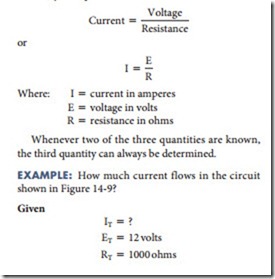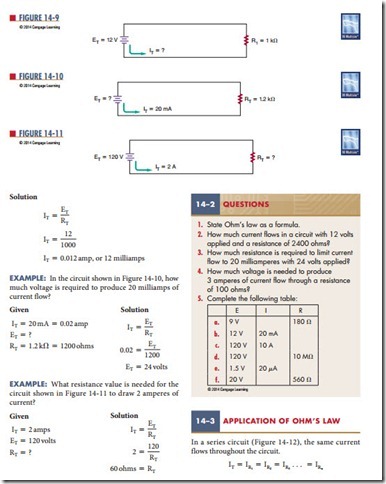Ohm’s Law
In 1827, George Ohm first observed Ohm’s law, or the relationship among current, voltage, and resistance. Ohm’s law states that the current in an electric circuit is directly proportional to the voltage and inversely proportional to the resistance in a circuit. This may be expressed as follows:
Related posts:
MECHANICAL TESTS
Ground Loops: How They Work and How to Deal with Them
Speed Control for a Compound DC Motor
Power
SPLIT-PHASE MOTOR - POLYPHASE MOTOR STARTERS (Motor Starting Methods)
Wiring Methods for Lighting Circuits:Residual Current Devices
SPEED CONTROL OF INDUCTION MOTORS:SPEED CONTROL BY CHANGING THE ROTOR RESISTANCE AND SOLID-STATE IND...
Audio Amplifiers:Slew Rate Limiting
Digital Audio Fundamentals:Audio Compression
INDUCTION MOTOR EQUIVALENT CIRCUIT:THE IDEAL TRANSFORMER
SYNCHRONOUS GENERATORS:THE PHASOR DIAGRAM OF A SYNCHRONOUS GENERATOR
Speed control of d.c. Motors:Electric Braking
Stepping Servo Motors:Principal Operation
summary of current

